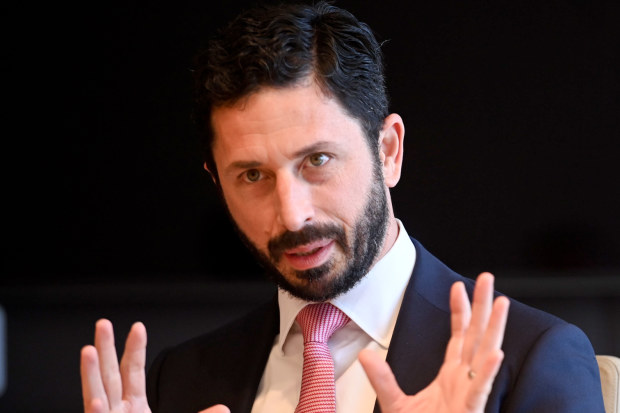All participants agree Australia is in an energy race with the rest of the world but the country is in danger of falling behind if the government doesn’t step up more – athough the current federal government has started to head in the right direction.
Europe is already moving ahead and the Biden administration’s Inflation Reduction Act in the United States is also proving a massive game changer.
Westpac’s Miller says Australia’s response should be like being on a war footing in terms of energy.
“It’s where we need to go,” he says, because countries like China and the US are going to get ahead of other nations quickly.
“They’ll go through the door first and we’ll have to wait,” Miller says.
Reason being is unless Australia goes all in on converting the national grid to renewables the country will need to wait because a piecemeal approach won’t work, he explains. China and the US will jump ahead quickly and they will be the countries using all the resources and accessing scarce engineering talent.
Joyce says Australia is already falling behind in aviation, for example, where the US (in California especially) is forging ahead rapidly with sustainable aviation fuels, although he’s comforted by the federal government’s recent announcement on forming a ‘jet zero council’, which was launched at the Avalon Airshow at the end of February.
Speaking at the launch, the federal Minister for Infrastructure, Transport, Regional Development and Local Government, Catherine King, said: “Sustainable aviation fuels (SAF) represent a tangible opportunity for the aviation sector to cut its emissions in the short to medium term and it is encouraging to see that happening first-hand.”
Joyce says developing a local SAF industry represents a huge opportunity for Australia because “we’ve got the land mass and feedstock to be able to produce it here and it’s a transition we need to do ... and the reality is government must make investments to make it happen”.
To Schroder’s point about the country’s transition to net zero not following a linear path, Aurizon’s Harding says it can be difficult for companies trying to do the right thing.
He says a company might share its sustainability plan with its customers, who will acknowledge it’s a good idea but will also say they’re not paying for it – which means the path to net zero is only ever going to come out of a company’s own profitability.
“Sometimes we’ll ask them to help in our journey and they’ll say, ‘You’re not my biggest issue, I’m not interested in talking to you’,” Harding says.
Alternatively, he says some customers are very proactive, such as Anglo American, which together with Aurizon is working on a hydrogen engine in a locomotive because the mining giant is very keen on hitting its net zero targets as quickly as possible.
With all the rhetoric around net zero, Schroder says people mustn’t lose sight that it’s net zero globally, and Australia gains nothing if, in its drive to reach the target, it merely forces companies to push certain activities into other less stringent jurisdictions.
A classic example is cement production. It’s highly carbon-intensive to produce, yet the more people go after the industry domestically the more likely Australia will see its production pushed offshore to countries with less stringent carbon targets.




